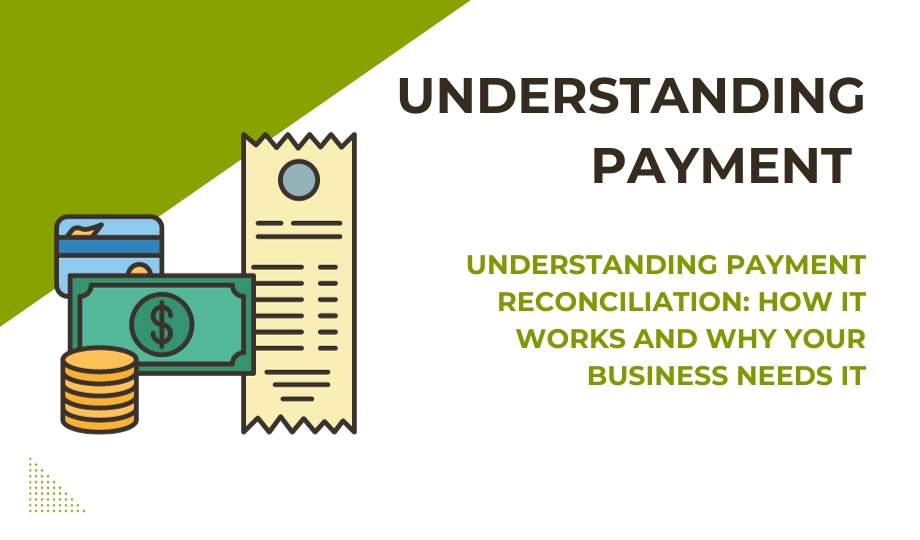In the realm of business, regardless of its size, financial management is paramount. The absence of an efficient financial system can lead to gradual losses, which may become substantial by the time they are identified. This is where payment reconciliation steps in. Payment reconciliation empowers businesses to meticulously track every financial transaction, ensuring a precise account of funds flowing in and out. By comparing internal records with those provided by banks, payment reconciliation not only prevents losses but also offers a host of additional benefits, including fraud prevention and streamlined cash flow management.
This article aims to shed light on payment reconciliation, its mechanisms, and the advantages of incorporating a reconciliation solution into your business operations.
Payment Reconciliation in the Digital Age
Payment reconciliation is a fundamental accounting process that revolves around the meticulous comparison of internal financial records with bank statements. The primary goal is to validate the accuracy of the general ledger records maintained by the company against the bank’s official statements. Any discrepancies found in this comparison warrant further investigation.
How Payment Reconciliation Works and Its Key Components
Payment reconciliation hinges on three primary components: bank statements, payment records, and accounting systems. Companies analyze payment records generated by their accounting systems in juxtaposition with bank statements to identify and rectify any inconsistencies. Here’s how the process unfolds:
1. Internal Process: Within the organization, each transaction is recorded or scheduled, with automated accounting solutions being the most efficient method. However, some companies still rely on manual processes, including saving receipts and managing paperwork to maintain transaction records.
2. External Process: Externally, the bank systematically records every transaction. At the end of each month, a bank statement is generated, encapsulating all transactions within that period. Companies then cross-reference this statement with their internal records, flagging any discrepancies for immediate resolution. Discrepancies, whether originating from the bank or the company, are addressed to prevent future miscalculations.
Exploring the Three Types of Reconciliation
Payment reconciliation manifests in three common forms:
1. Bank Reconciliation: Bank reconciliation is one of the most intricate forms, owing to the myriad ways money moves in and out of bank accounts. It involves comparing disbursements (outflows) and deposits with the company’s bank statements and accounting books.
2. Credit Card Reconciliation: This type of reconciliation pertains to transactions made using credit cards. Companies cross-reference monthly credit card statements with their internal records to ensure accurate accounting. Additionally, these transactions are compared with bank statements to confirm credit card bill payments.
3. Cash Reconciliation: Typically carried out in physical stores, cash reconciliation involves comparing all cash, card, or check transactions recorded in a register with the sales receipts. Any discrepancies in the totals may signify accounting errors or potential employee theft.
The Pitfalls of Not Implementing a Payment Reconciliation Solution
Neglecting to establish an effective reconciliation process can result in various adverse consequences:
1. Inaccurate Cash Balances: Without a reconciliation solution, your bank accounts may reflect lower balances than anticipated, potentially leading to bounced checks or overdraft fees.
2. Undetected Fraud: The absence of reconciliation means you won’t discern which payments were genuinely disbursed, leaving you vulnerable to undetected fraudulent activities.
3. Cash Flow Disruptions: Failure to perform payment reconciliation can disrupt your ability to identify delayed deposits or outstanding payments. This can lead to cash shortages or surpluses, hampering your ability to meet financial obligations.
4. Impaired Decision-Making: Without reconciliation, you lack an accurate estimate of available cash in your accounts, impairing decision-making and impacting your bottom line.
5. Unpaid Bills or Invoices: Neglecting payment reconciliation leaves you unaware of whether all issued invoices have been settled.
The Benefits of Implementing a Payment Reconciliation Solution
Implementing a payment reconciliation solution yields numerous advantages:
1. Accurate Financial Records: A reconciliation solution enables you to compare financial records from multiple sources, ensuring no financial discrepancies go unnoticed.
2. Fraud Detection and Prevention: The reconciliation process can uncover suspicious activities, enhancing vigilance and thwarting potential fraud attempts.
3. Effective Cash Flow Management: Precise reconciliation facilitates better cash flow management, helping you identify discrepancies and forecast and manage cash flow more accurately.
4. Efficient Financial Reporting: Accurate financial records improve the precision of financial reporting. Automated solutions reduce the time and effort required to generate financial reports, enhancing efficiency.
5. Payment Optimization: Payment reconciliation provides insights into cash flow and transaction patterns, allowing you to monitor payments closely. This reduces the likelihood of manual errors, detects discrepancies, and enables effective payment optimization.
Challenges of Manual Reconciliation and Tools for Streamlining the Process
Many businesses resort to manual reconciliation processes, which come with several challenges:
1. Prone to Errors and Inefficiencies: Manual reconciliation is time-consuming and error-prone, leading to inefficiencies. Employees must manually cross-reference statements and records, resulting in delays and inaccuracies.
2. Complex Transactions and Multiple Payment Channels: Manual reconciliation becomes particularly challenging when dealing with complex transactions that involve multiple parties and payment methods, such as credit cards, banks, and digital wallets.
3. International Transactions: International transactions introduce additional complexities, including varying banking practices, exchange rates, and currency differences. Manual reconciliation may struggle to account for these nuances with 100% accuracy.
Businesses can address these challenges by opting for automated reconciliation solutions, which offer efficiency and precision. Alternatively, integrating your accounting system with bank APIs can streamline the process by reducing manual input.
Additionally, data analytics and reporting tools provide a comprehensive overview of all payments within your system, supporting informed decisions and process optimization.
In Conclusion
Payment reconciliation serves as a critical accounting process, ensuring the alignment of internal and external financial records to identify and resolve discrepancies. It fosters accurate financial record-keeping, robust fraud prevention, streamlined cash flow management, and optimized payments. To avoid the consequences of neglected reconciliation, consider implementing a reconciliation solution or exploring alternative methods to enhance financial efficiency and security in your business operations.

